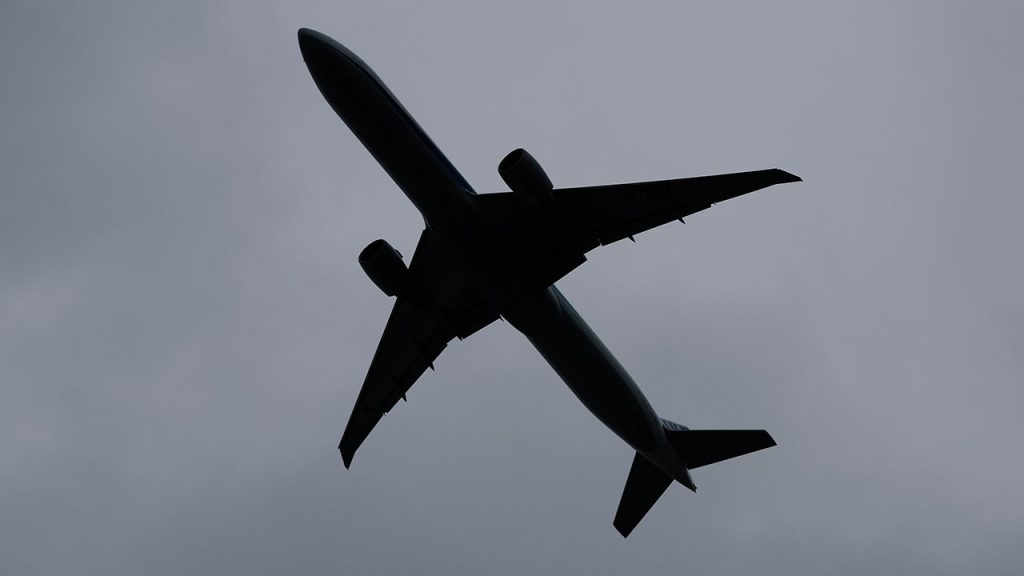Recent data has highlighted a significant threat to airline safety, particularly from drones. In the past year, nearly two-thirds of reported near-midair collisions involving commercial aircraft during takeoffs and landings at the 30 busiest airports in the United States were attributed to these unmanned aerial vehicles. This alarming trend has prompted concerns among aviation experts and officials, as calls for stricter regulations and better enforcement grow.
| Article Subheadings |
|---|
| 1) The Rising Threat of Drones to Aviation Safety |
| 2) Patterns of Drone Incursions at Major Airports |
| 3) Regulatory Challenges and Compliance Issues |
| 4) The Need for Enhanced Drone Detection Technology |
| 5) The Call for Stricter Penalties for Drone Operators |
The Rising Threat of Drones to Aviation Safety
According to new aviation safety data, drones are posing an unprecedented challenge to commercial aviation. Reports indicate that in the previous year, approximately two-thirds of near-midair collisions occurred with drones, particularly during critical phases of flight such as takeoff and landing. The rising popularity of drones—both recreational and commercial—has outpaced the understanding and enforcement of regulations surrounding their usage. Prominent aviation attorney Jason Matzus remarked,
“The rise in recreational and commercial drone use has simply outpaced education and enforcement.”
This gap in regulation and awareness has led to an increase in dangerous encounters between drones and commercial aircraft.
Patterns of Drone Incursions at Major Airports
The majority of reported drone-related incidents are occurring around some of the busiest airports in the United States. Notable incidents include a drone nearly colliding with a passenger jet at Newark International Airport and another encountering a commercial airliner at Miami’s international airport. These events have raised serious concerns about airspace safety and highlight the urgent need for improved monitoring and control methods. James McDanolds, an expert from the Sonoran Desert Institute, noted,
“The issue is mostly related to the population.”
High-density areas surrounding major airports exacerbate the risk, as many new drone operators may lack proper training or acknowledgment of air traffic regulations. Reports detail that over the past decade, drones were responsible for more than half of all reported near-misses, demonstrating a growing trend that requires immediate attention.
Regulatory Challenges and Compliance Issues
While the Federal Aviation Administration (FAA) has established necessary regulations, enforcement has proven challenging given the rapid growth in drone technology and usage. Currently, airports reside in Class B airspace, which mandates drone pilots to secure FAA authorization for flights. However, many novice drone operators are uninformed about these restrictions, leading to infractions that pose significant threats to safety. Matzus pointed out,
“New drone pilots may not be aware of the regulations that restrict flying near airports.”
The absence of stringent enforcement measures, coupled with outdated compliance systems, suggests that an overhaul of existing regulations may be necessary to protect commercial aviation.
The Need for Enhanced Drone Detection Technology
With the growing number of near-miss incidents, aviation experts and FAA officials are advocating for advanced drone detection and mitigation technologies at airports. Current measures are insufficient to prevent drone incursions, particularly as many drones previously mitigated by companies like DJI through geofencing have become less reliable, shifting responsibility to local authorities. The FAA is currently experimenting with various drone detection technologies, including devices that utilize radio signals to force drones to land. Furthermore, mandatory remote identification systems for drones aim to enhance accountability and visibility for drone operators.
“The FAA has been testing drone detection and counter-drone technologies at airports over the last few years,”
stated an FAA official.
The Call for Stricter Penalties for Drone Operators
As incidents involving drones continue to escalate, the necessity for stricter penalties for unauthorized drone operators has become increasingly clear. The FAA reports more than 100 drone sightings near airports each month, and recent legislative measures include potential fines of up to $75,000 for unsafe operations. In instances where drone pilots have faced legal repercussions, such as the arrests of two men in Boston for flying near Logan International Airport, enforcement action has underscored the lengthy process of educating the public about responsible drone use. Calls for harsher penalties include not only fines but also public outreach aimed at informing potential drone operators about the legal ramifications of flying in restricted airspace.
| No. | Key Points |
|---|---|
| 1 | Drones accounted for over two-thirds of near-midair collisions with commercial aircraft in the last year. |
| 2 | Major airports are particularly vulnerable due to their surrounding populations and increased drone usage. |
| 3 | Regulatory enforcement is lacking, with many new pilots unaware of necessary restrictions. |
| 4 | The FAA is exploring advanced technologies to enhance drone detection and mitigation. |
| 5 | Calls have increased for stricter penalties to deter reckless drone operations near airports. |
Summary
The prominent rise in near-miss incidents involving drones and commercial aircraft underscores a critical need for enhanced regulatory measures and improved public education. As drones become increasingly popular, their integration into airspace requires robust safety protocols to avert potential disasters. Regulatory bodies, experts, and aviation authorities must collaborate to develop advanced technologies while instituting stringent penalties for non-compliance, ultimately ensuring the safety and security of air travel in an evolving landscape.
Frequently Asked Questions
Question: How do drones contribute to near-miss incidents with commercial aircraft?
Drones often contribute to near-miss incidents due to their unregulated operation in restricted airspaces, particularly around busy airports, where they can interact dangerously with aircraft taking off and landing.
Question: What penalties do drone operators face if they violate air traffic regulations?
Drone operators who violate air traffic regulations may face substantial fines, up to $75,000, and even legal repercussions, including possible criminal charges and jail time.
Question: Why is there a need for better drone detection technologies?
Enhanced drone detection technologies are necessary to improve the monitoring of drone activities in restricted airspaces, reduce near-misses with aircraft, and ensure the safety of passengers and crew.


